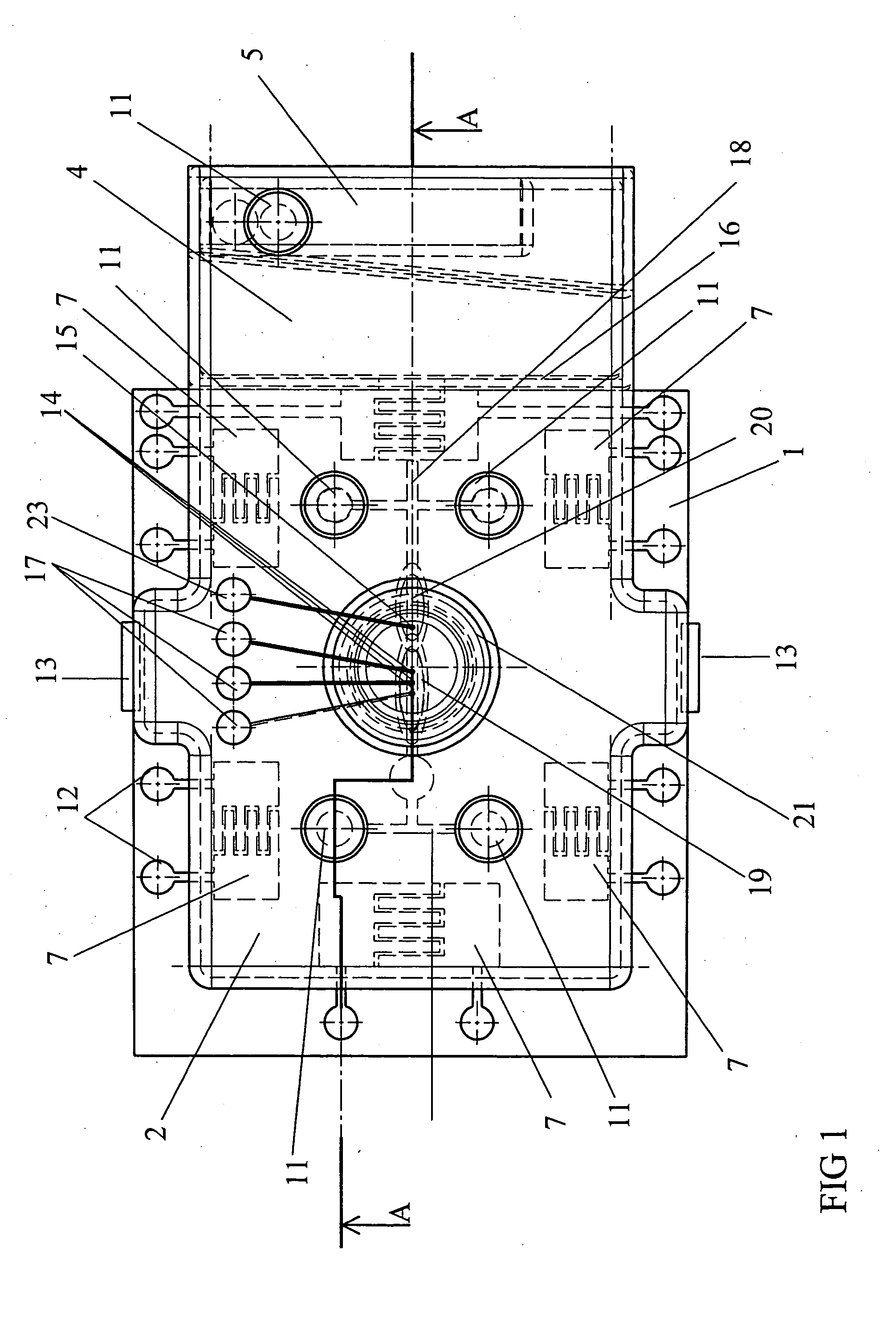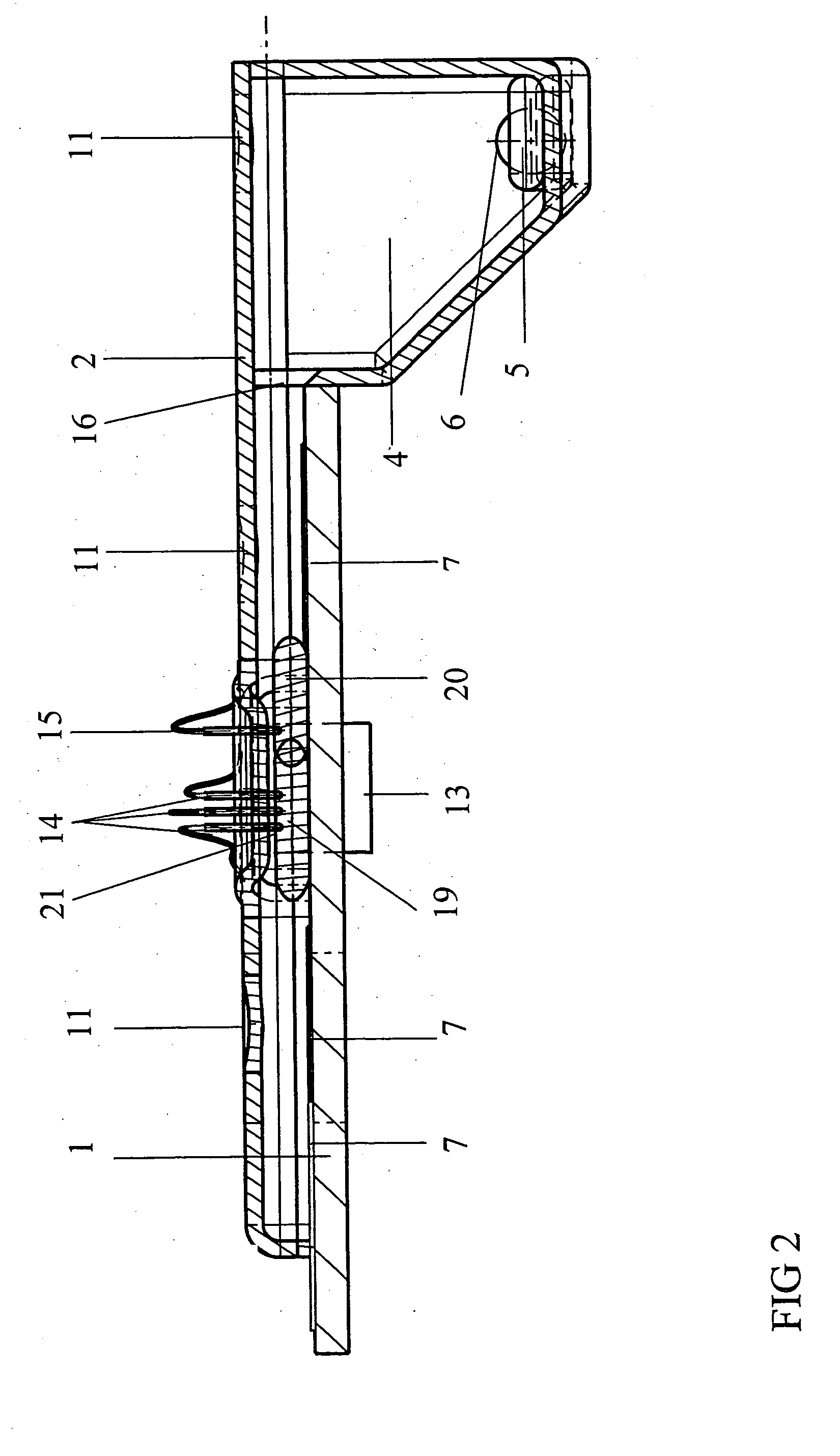Method and device for determining analytes in a liquid
a liquid and analyte technology, applied in the field of liquid and analyte determination methods and devices, can solve the problems of high manufacturing cost of microstructured sensors and electrodes, unsuitable routine use of microanalytical systems, and inability to reliably detect the presence of analyte,
- Summary
- Abstract
- Description
- Claims
- Application Information
AI Technical Summary
Problems solved by technology
Method used
Image
Examples
Embodiment Construction
[0029] The present invention is directed to methods and devices for determining analytes in liquids which are characterized in that the liquid to be examined is applied to a substrate and the liquid volume to be examined is moved on the surface of the substrate, the so-called transport plane, to the site of examination wherein the liquid is only in contact with the substrate of the transport plane during transport. The movement can be effected by methods such as acoustic surface waves or electrowetting. In addition, the methods and devices according to the present invention are characterized in that they have at least one sensory element and optionally additional analytical units which are located separately from the substrate of the transport plane in a second plane that is opposite to the substrate, the so-called detection plane. This detection plane is designed such that the liquid volumes are not in contact with the detection plane or their movement is not disturbed by the detec...
PUM
| Property | Measurement | Unit |
|---|---|---|
| volumes | aaaaa | aaaaa |
| volume | aaaaa | aaaaa |
| optical methods | aaaaa | aaaaa |
Abstract
Description
Claims
Application Information
 Login to View More
Login to View More - R&D
- Intellectual Property
- Life Sciences
- Materials
- Tech Scout
- Unparalleled Data Quality
- Higher Quality Content
- 60% Fewer Hallucinations
Browse by: Latest US Patents, China's latest patents, Technical Efficacy Thesaurus, Application Domain, Technology Topic, Popular Technical Reports.
© 2025 PatSnap. All rights reserved.Legal|Privacy policy|Modern Slavery Act Transparency Statement|Sitemap|About US| Contact US: help@patsnap.com



